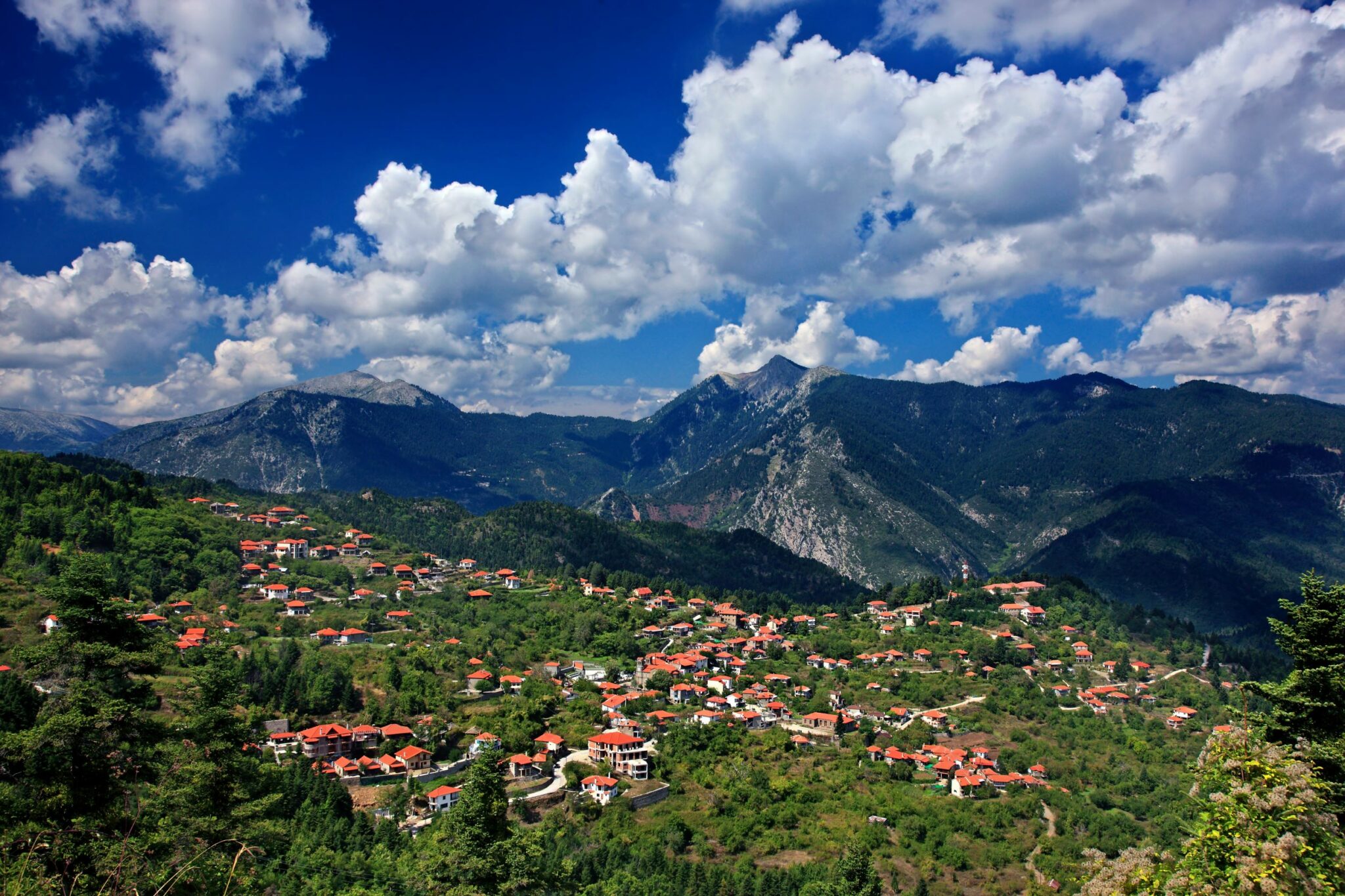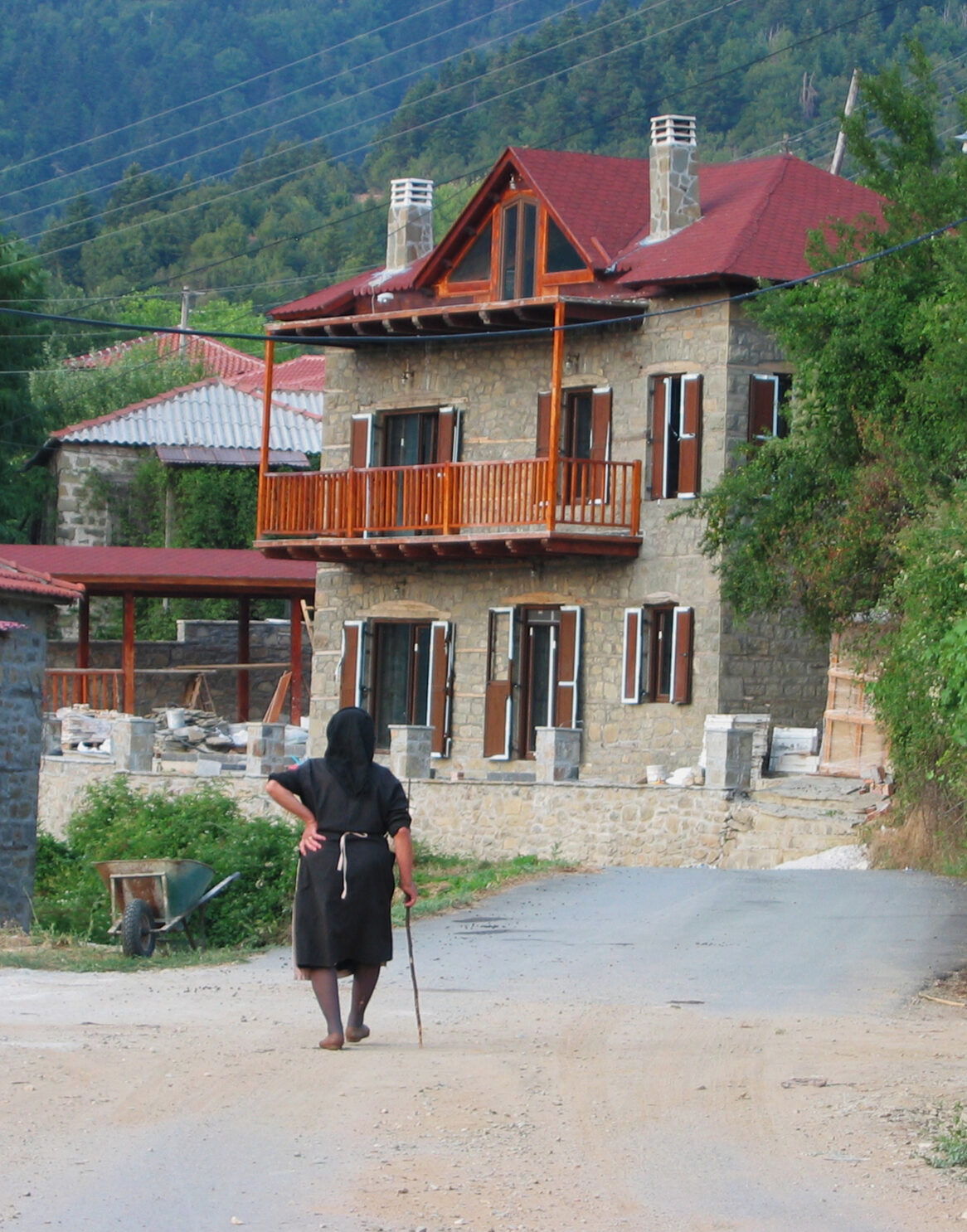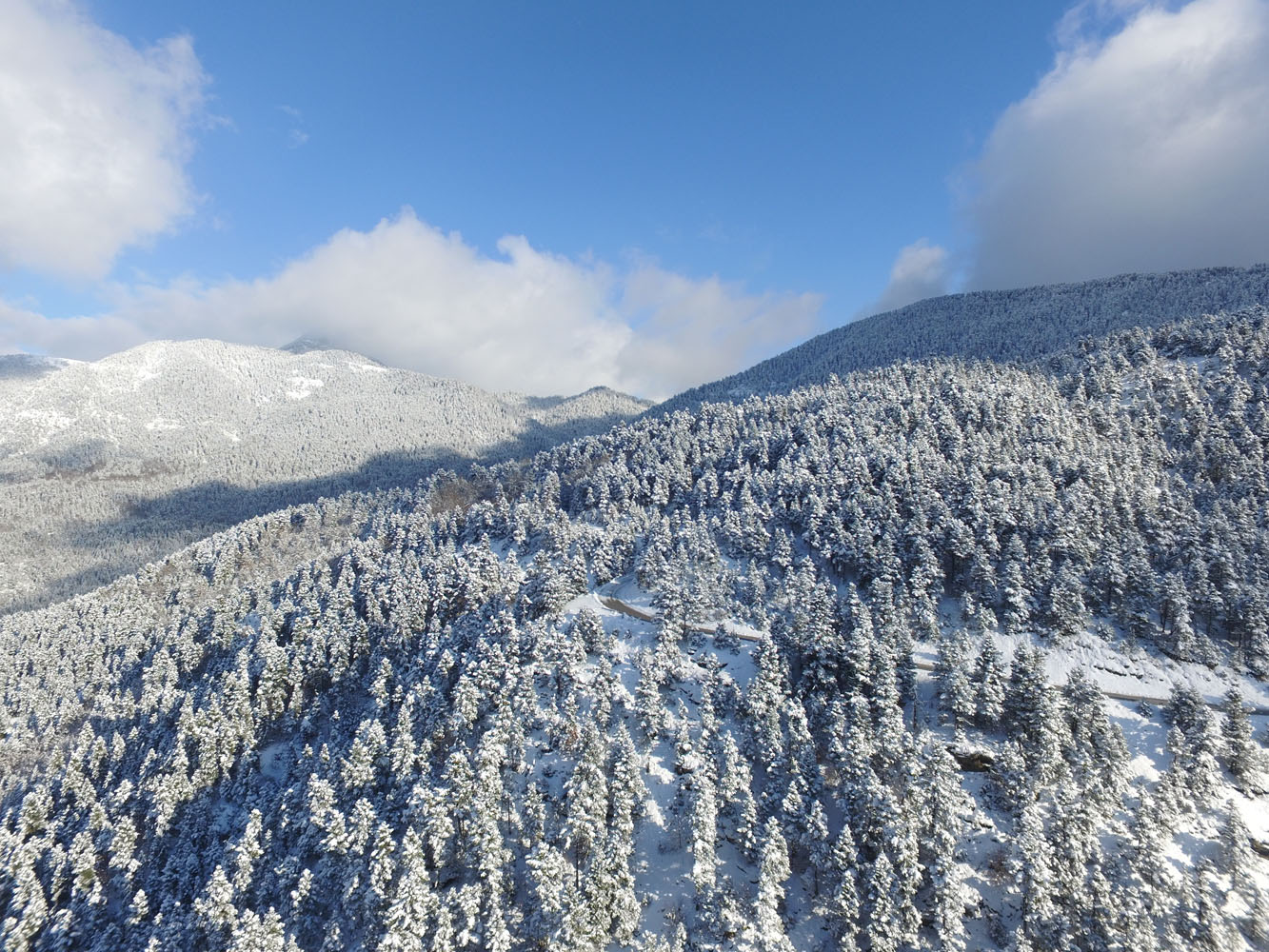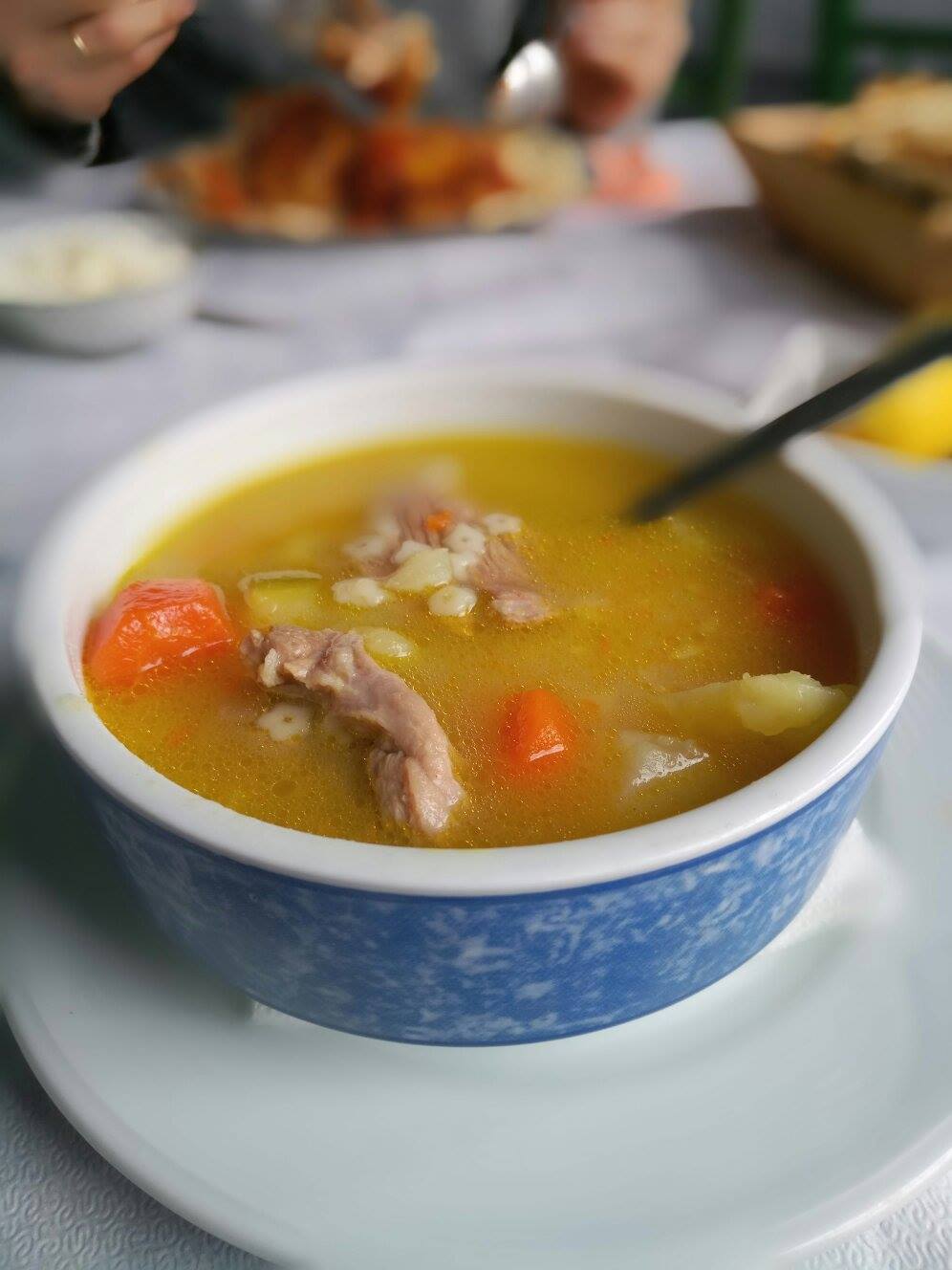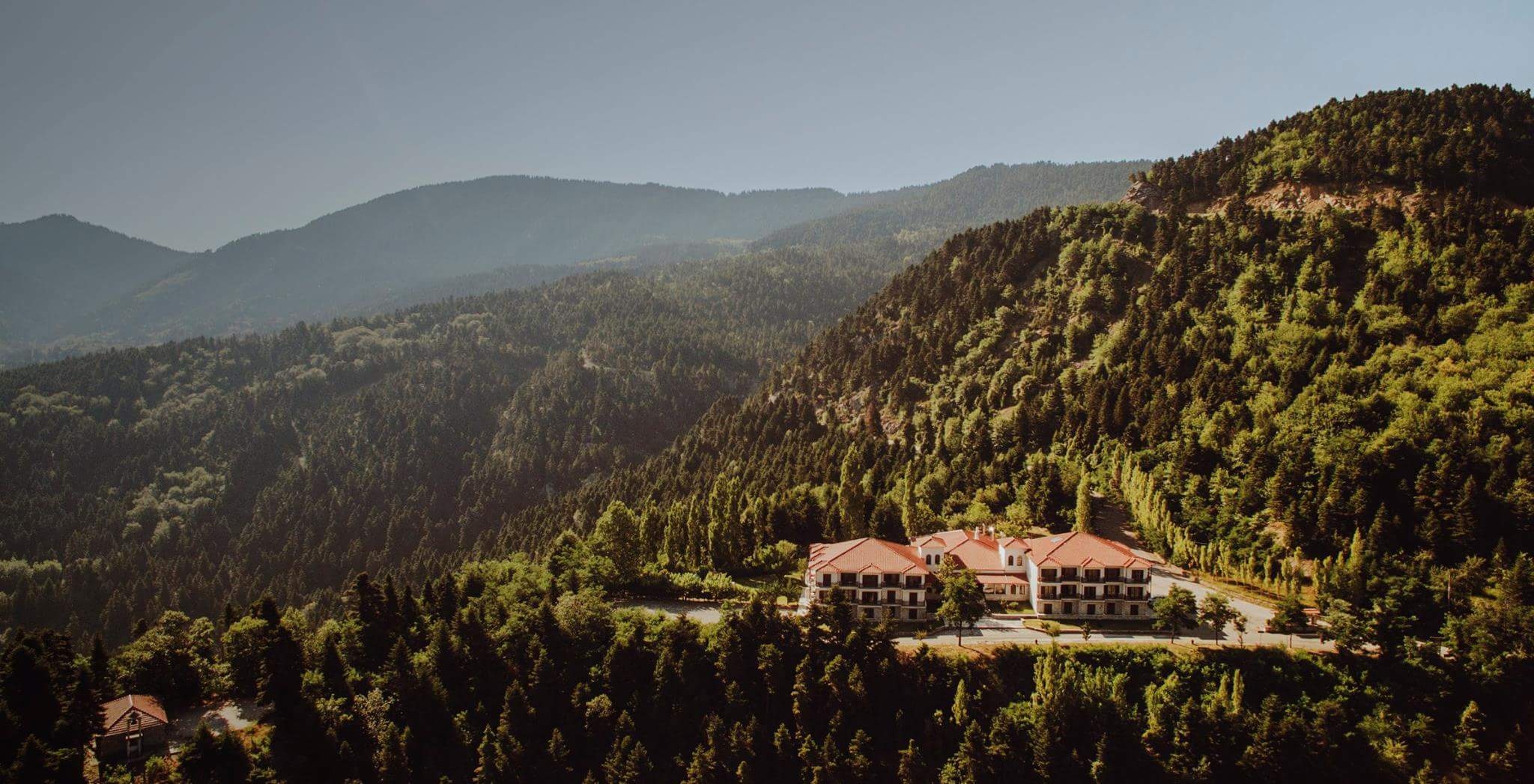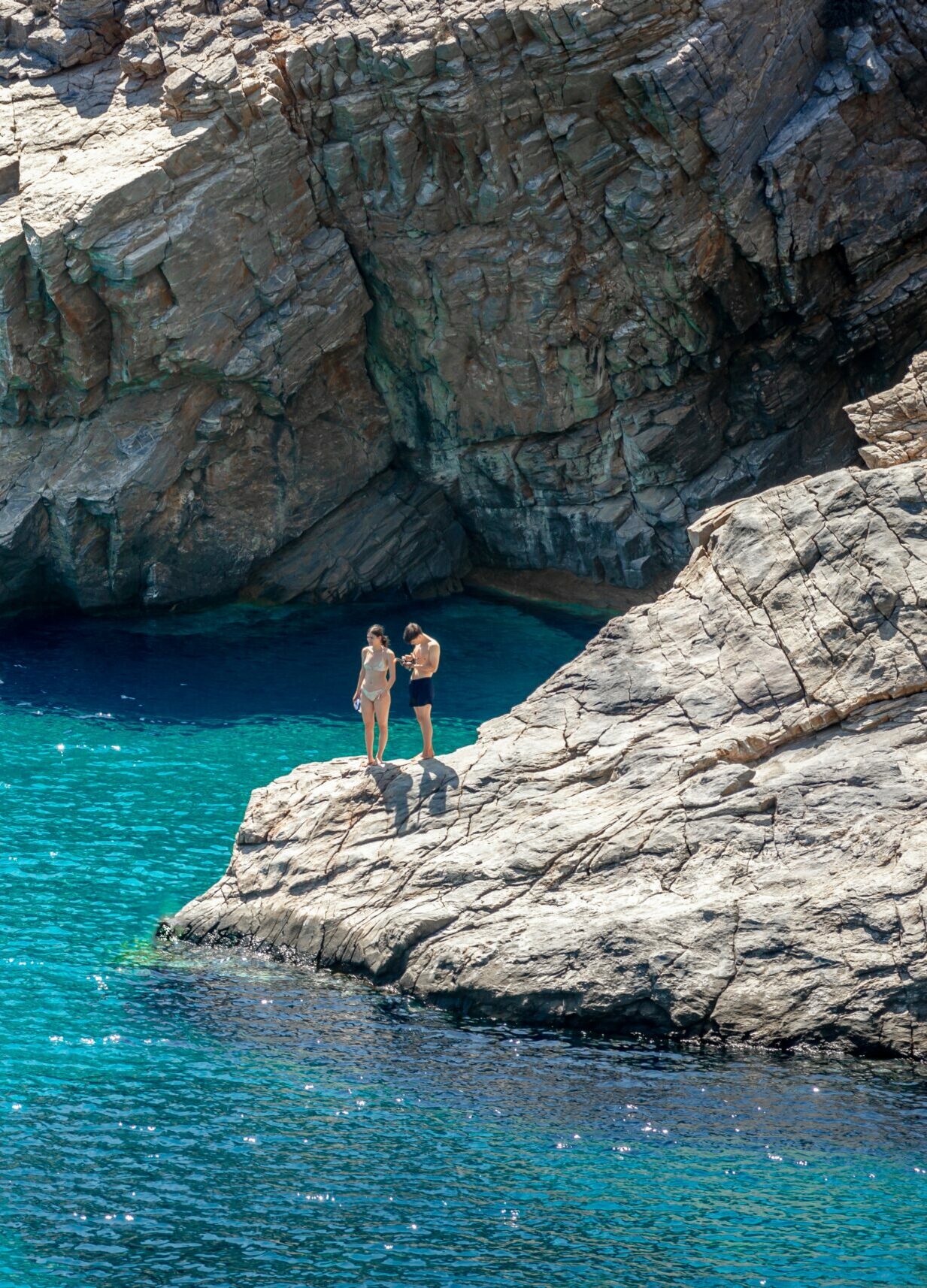The inaccessible location of mountainous Nafpaktia, hidden among towering mountains – Pindos, Oxia, Panetoliko, Vardousia- kept it isolated for hundreds of years and even today it is one of the least visited Greek destinations.
Kravara, as mountainous Nafpaktia was called during the Ottoman occupation, is surrounded by huge mountain ranges – the mountains of Tsakalaki, Xerovouni and Tsekoura reach an altitude of 1,731 m- as well as rivers, gorges, streams, waterfalls and (artificial) lakes.
Here, the much-used word “escape” takes on its true meaning. The beauty of the area is breathtaking. Villages hang like eagle nests amidst endless forests of fir, walnut, beech and chestnut trees. Bordered to the south by the rivers Mornos and Evinos and its tributary Kotsalos, water plays a leading role in shaping the landscape.
Driving from village to village, through endless twists and turns, the hillsides plunge steeply into invisible canyons, where foxes, squirrels and even deer may suddenly flash by.
Due to their inaccessible location, the villages of mountainous Nafpaktia, more than 40 if the settlements in the mountain valleys are included, were forced to an inward-looking type of settlement development. The main villages became the nuclei of all commercial and trading activities. One of them, and the most developed in terms of tourism today, is Ano Hora.
Ano Hora
Regardless of the season, a sense of peace and relaxation along with stunning forest and mountain views, as well as the sedative sound of running water are visitors’ constant companions here. In fact, the marvellous natural landscape of Ano Hora is its most important, most valuable asset. Featuring a small market and the imposing church of Agia Paraskevi, which was founded in 1918 and stands out among the small, humble churches of the region, the cobbled centre of the village is an important landmark. Nearby is the church of Patrocosmas, dedicated to Saint Cosmas of Aetolia. Next to Agia Paraskevi, in a dedicated area, stands “Karnavalos”, the small old colourful bus that connected Ano Hora and Kato Hora with Nafpaktos until 1983.
The days at Ano Hora are spent in a pleasant and carefree way, strolling along the village’s cobbled streets under lush plane trees, amongst old stone-built houses and new ones following the traditional local architecture. Start your day with a delicious hearty breakfast at a charming guest-house, then enjoy local tsipouro and food at the village’s quaint little taverns, make a pit stop at a traditional Greek café for a nice hot brew and home-made desserts by the fireplace. Notice the water’s burbling sound echoing throughout the entire village.
Built amphitheatrically on the slopes of Mt Vardousia, at an altitude of 1,030m., Ano Hora stands majestically gazing at the endless mountain peaks below. Prominent village of the region since the 19th century, Ano Lobotina (its old name) was the seat of the School of Lobotina during the Turkish occupation, which operated under the protection of an old wealthy family originating from Byzantium. Cosmas of Aetolia attended this school for two years.
Kato Hora, the epitome of idleness
Depending on the season, here you may enjoy a wide range of mountain activities such as hiking, rafting, mountain bike and 4×4 routes. Just 4km further down, Kato Hora (Kato Lobotina, as it was known during the Turkish occupation), nestled between two torrents, is the epitome of idleness and cocooning. From here, you can visit the Tsourna waterfall (beware of the weather). You can also hike your way here, which – depending on your stamina- will take you about 2 hours.
Even more ambitious and of great beauty is the hiking route that leads from Ano Hora to the village of Ambelakiotissa and reaches the gorge of Kakkavos (better wait until spring).
Alternative activities at KRAVARA PARK
A great idea, supported by the hotels “Ta Petrina” and “Crystal Mountain Hotel”, where you can find all the necessary information and plan your excursions. The Kravara Park covers an area of 20,000 acres around the village and boasts over 100 kilometres of cycling routes. In addition, in recent years many old routes in this area have been cleared and marked and new ones have been created. You can go hiking, mountain biking and depending on the season you can collect mushrooms, chestnuts and herbs (balsam, mountain tea, oregano).
Events
In February, you will be delighted by the “Festival of Tsigarithra” that takes place in Ano Hora. Tsigarithra is a favourite local delicacy, namely small pieces of pork, dry on the outside but tender inside. During the festival, barbecue grills are set up in the village and guests can enjoy this delectable treat for free along with local wine or tsipouro. Every October the “Chestnut and Tsipouro Festival” is also held here, during which tsipouro is distilled, chestnuts are roasted, traditional food and sweets are served.
Food
In Ano Hora, as in the whole area, you will enjoy exceptional local meat, even wild calf. These are calves that graze freely on the mountain. In the winter, when everything is covered with snow, the farmers enrich their feed ration with the necessary nutriments. You will also find wild boar dishes and handmade delicious pies everywhere. Before heading to a restaurant, remember to always ask if it is open and what’s on the menu beforehand, especially if you have a particular interest in stews and casserole dishes. Mountainous Nafpaktia is not a busy tourist destination, especially on weekdays.
Patouhas, Ano Hora (+30 26340 41392):
A short menu of well-made casserole dishes (wild boar stew, stuffed cabbage rolls, lamb stew, etc.), kontosouvli (spit roasted meat), handmade pies, burgers and roasts. The restaurant overlooks the village.
Moshoula, on the road to Kato Hora (+30 26340 41111):
Numerous casserole dishes (wild boar stew, braised rooster with pasta, slow-cooked knuckle, etc.), pies and succulent roasted meats. Part of the guest-house “Xenios Dias” in Kato Hora.
Panorama, Ano Hora (+30 26340 41478):
Nice drinks, good coffee and mouth-watering desserts by the fireplace. Also serves a few savoury dishes such as pasta, pizza and burgers. You should try the chestnut pie. Panorama is located on a hill a bit outside the village, offering great views.
Accommodation
Traditional stone-built guest-houses are the norm here. Modern, luxurious and large-scale accommodation is an exception and is represented only by the Crystal Mountain Hotel.
Ano Hora
Crystal Mountain Hotel (+30 26340 41555):
The first hotel that brought modern hospitality to the area. Relatively large and luxurious, surrounded by fir trees, with large rooms in a romantic style, a swimming pool and hearty breakfast with local products. Restaurant for guests.
Ta Petrina (+30 26340 41101):
Very beautiful stone-built complex in nature, with independent stone houses, built amphitheatrically, offering panoramic views of the mountain peaks. Breakfast with local products.
Kannaveiko (+30 26340 41244):
Three storey stone-built guest-house, whose history goes back to 1821. It has a kitchenette and views of the mountains.
Kato Hora
Xenios Chalets (+30 26340 41111):
A small chalet complex in a fir forest, decorated in country style. Breakfast with freshly-baked bread and local products. Wonderful views of Ano Hora and the surrounding mountains.
Read also:



